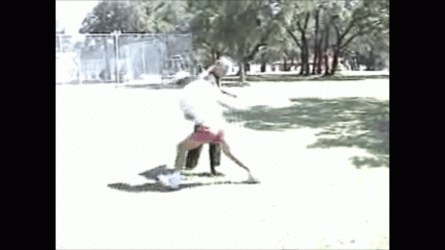Let's look at the situation. Both resisting and yielding are not good options.
If you resist, your opponent will borrow your resistance force, change his pulling into pushing and take you down by single leg.
If you yield, your opponent will borrow your yielding force, continue his pulling and let you to eat dirt.
Your opponent tries to multiplane your balance with his grip (either on your upper arm, or on your shirt). If you use your
- right hand to control his grabbing arm,
- left hand to push on his elbow joint, and
- cut in front of his circular movement, you can take over his control.
This is the most logical counter to deal with circular running. It may take you sometime to figure it out by yourself. But if your teacher just tell you, it's so simple.
https://i.postimg.cc/BZFH5mtn/counter-to-tear.gif

